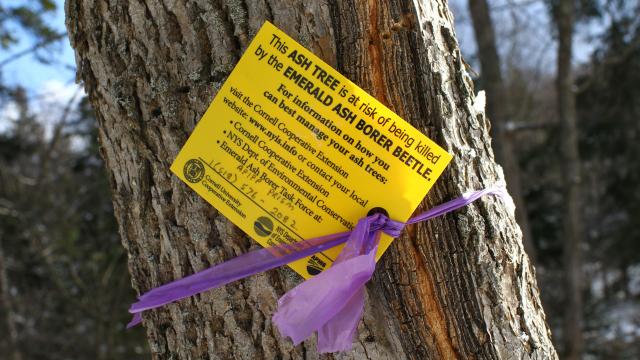New findings show that invasive species are wiping out trees across the U.S., devastating forests and their ability to store carbon. That’s particularly bad news in light of the worsening climate crisis.
Turning the tide against climate change will need to involve tending to forests and maximising their ability to suck up and store carbon in the trees and soil. Letting invasive species run rampant through them is not the way to do that.
Research released on Wednesday in the Proceedings of the National Academy of Sciences shows that U.S. forests are being hammered by invasive species — pests and diseases that come from foreign shores and which many North American trees have no natural defences against.
Just 15 invasive pests and diseases are responsible for killing trees that hold 6 million tons of carbon each year. The emissions from those trees decomposing is equivalent to the emissions of 5 million vehicles, and the carnage could expand to other parts of the forests as pests and diseases gain further footholds across the country. With more and more invasive species arriving on a wave of globalisation, the challenge of keeping forests healthy is only going to get harder. That raises the risk of turning certain parts of the American forest into a source of carbon emissions rather than a sink.
The results are based on samples taken at more than 92,000 plots monitored by the U.S. Forest Service from coast to coast. Researchers took measurements at those plots between 2004-2008 and again between 2009-2015 to see what trees were present and what, if any, had bit the dust. They also looked for the presence of a rogue’s gallery of 15 major invasive pests and diseases, including the emerald ash borer, chestnut blight, gypsy moth and hemlock woolly adelgid.
Some, like the woolly adelgid, have invaded nearly the entirety of the eastern hemlock’s range. Others like chestnut blight have already done widespread damage, which means their current impacts are in some ways less devastating. Others are only just getting started like the gypsy moth, which has seen a significant range expansion in recent decades.
On the whole, the scientists found that the combined impact of the 15 invasive species on American forests has been profound. Six million tons of carbon stashed in live trees turned into 6 million tons of carbon stashed in dead trees each year. That carbon is then slowly released through decomposition into the atmosphere. That’s the same number of trees wiped out wildfires annually.
The findings also show that up to 41 per cent of forests across the country are at-risk from the 15 invasives. And with an average of 2-3 new invasives being introduced to the U.S. each year, the possibility of more forest marauders doing damage is alarming.
The sliver of OK(ish) news is that forests aren’t becoming net carbon emitters yet. Other native (and non-native for that matter) species of trees and plants can pop up to take the place of their fallen comrades. Some trees may also develop defences against the new pests, though, they’ll also have to deal with climate change and the host of problems it can bring.
Overall, the research provides vital information for forest managers, including what types of pests to control for, what regions are vulnerable, and how much funding to request for what the researchers dub “biosecurity” and pest eradication. It’s worth keeping forests in tip-top shape because, well, forests are great. But their role sequestering carbon is critical, so information on maintaining healthy forests has never been more valuable or necessary.
